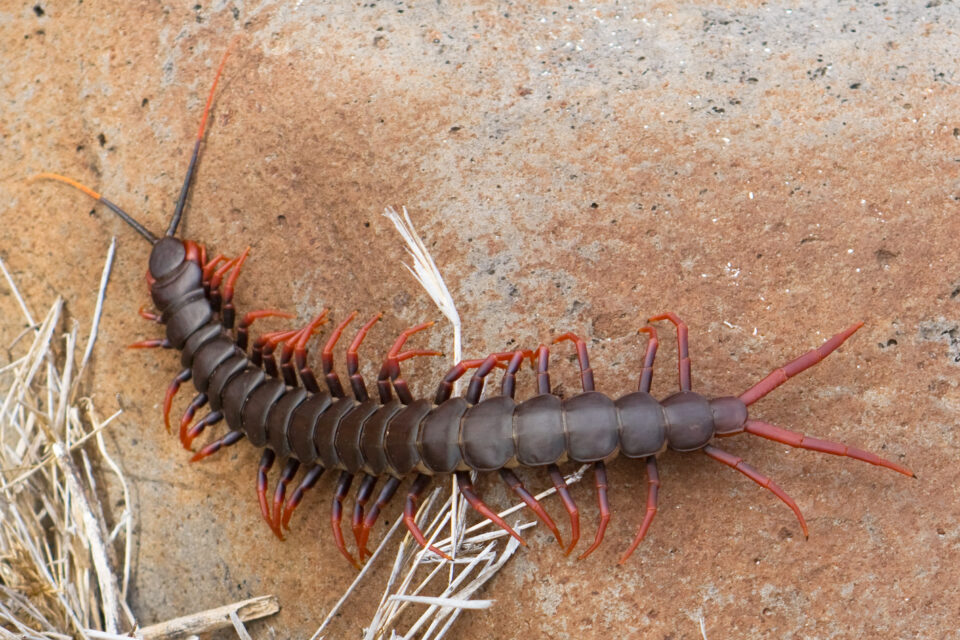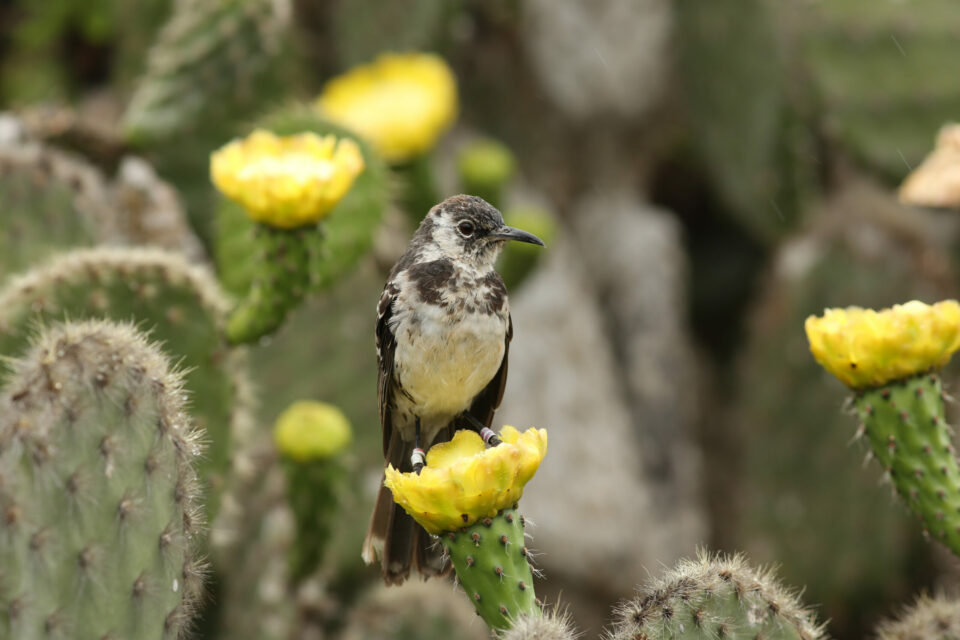

Researchers uncover the forgotten snakes of Floreana
Research funded by GCT is increasing our knowledge of the rare Floreana racer snake.
The Galapagos Islands are home to numerous fascinating reptiles: giant tortoises, land iguanas, marine iguanas, lava lizards, geckos and snakes. These terrestrial snakes live on several islands in Galapagos, however, this fact is little known among visitors to the park as snakes are elusive and seldom seen. One species of snake is of particular interest due to its rarity: the Floreana island Galapagos racer (Pseudalsophis biserialis biserialis). This species is restricted to the islets of Champion and Gardner off the coast of Floreana island and their biology has been a mystery. They were first described by Günther in 1860 and we still know very little about them today.
In 2015, GCT helped fund a research team in Galapagos to conduct a field study of the racers, led by Dr Luis Ortiz-Catedral from Massey University in New Zealand. The study aimed to determine the population size of the species and to advance the knowledge about their diversity and biology. The information collected from the research will be used to assess the feasibility of a translocation of the species to Floreana island. This is the focus of one of the largest ecological restoration ventures in the Galapagos Islands to date.
The project started in November 2015, and was aimed at documenting the population size and aspects of the biology of the Galapagos racer. From November 2015 to January 2016 the research team visited Champion and Gardner islets on three separate occasions to collect the first data, faecal samples to determine the snakes diet, as well as blood and tissue samples for upcoming genetic analyses.

©Dr. Luis Ortiz-Catedral
The team captured, measured and released a total of 63 snakes (9 on Champion Islet and 54 on Gardner Islet) over 14 field days. Of the 63 snakes captured, blood from 58 individuals and tissue samples (tail tip 1-2 mm) from 55 individuals were obtained for analysis. In addition, the team obtained 31 faecal samples and 6 molts from snakes that were not captured. Taking into account the frequency of recaptures between field visits, the team estimates that Champion has a population of 18 individuals and Gardner of 339 individuals.
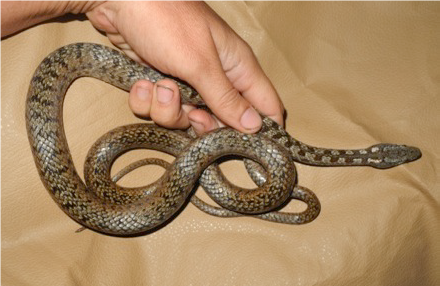
©Dr. Luis Ortiz-Catedral
The team completed three expeditions to Champion and Gardner from November 2015 to January 2016. Fieldwork took place from 5:30 am to 11:30 am and resumed at 2:30 pm through until 6:00 pm. The team searched along walking tracks and close to Opuntia clusters for the racers. When located, Floreana racers were picked up by hand and placed in a cool cotton bag for later assessment. To prevent over-heating, all snakes were assessed under a tarpaulin with good air circulation. Every snake captured was weighed, its length measured and also the dimensions of their heads measured. The team photographed the dorsal and ventral sides to document color variability. After all of the measurements were obtained, all of the racers were released to the same place they were captured.

©Dr. Luis Ortiz-Catedral
The team have now begun an assessment of the food preferences of Floreana racers by analyzing the frequency of faeces of 31 individuals. This study is the first of its kind in Galapagos. Previous information on the diet of racers was documented by infrequent analysis so therefore was not reliable.

©Dr. Luis Ortiz-Catedral
The overall objective of the research team is to use the findings to understand and learn how to relocate the Galapagos racer back to Floreana permanently, within the next five to ten years. The second objective is to train to a minimum of four park rangers on basic field techniques to survey and handle Floreana racer within the next five years. The team also trained two field rangers in capture, handling and measuring techniques of snakes during these sessions.
Two public presentations to the “Guias Naturalistsas de Galapagos” were also held to aid the progress of the project. The talks are a useful forum for the research team to answer any questions the naturalist guides may have. The aim is to inform visitors of Galapagos to the best of the guides knowledge, which involves answering questions asked in relation to terrestrial snakes and to learn fascinating details observed by nature guides during their guided tours. The Naturalist guides of the national park speak to hundreds of visitors per year, therefore spreading the message to the local community as well as foreign tourists.
Related articles

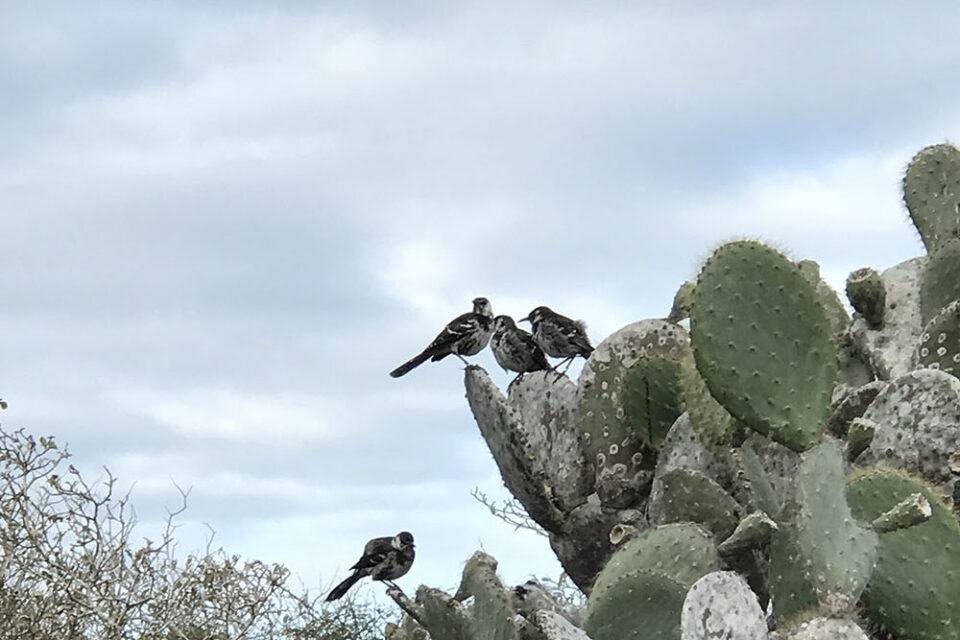
Snakes, iguanas and more... Part 2
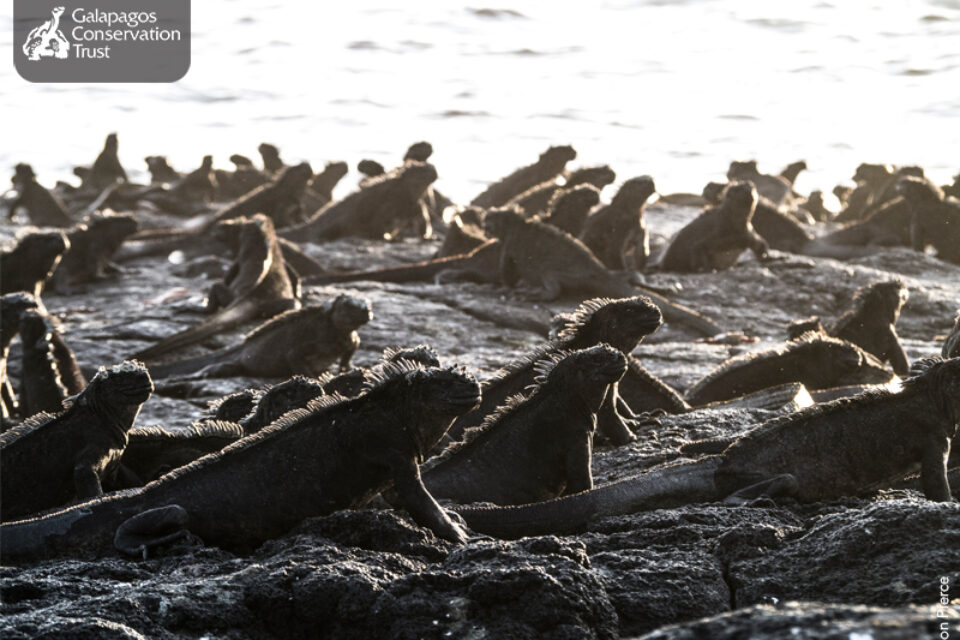
BBC Documentary: Planet Earth II Ep. 1
